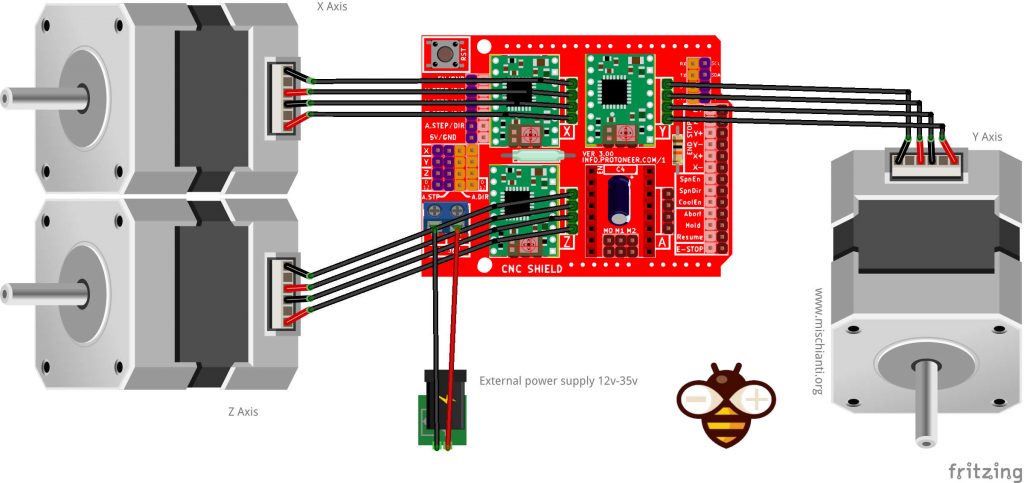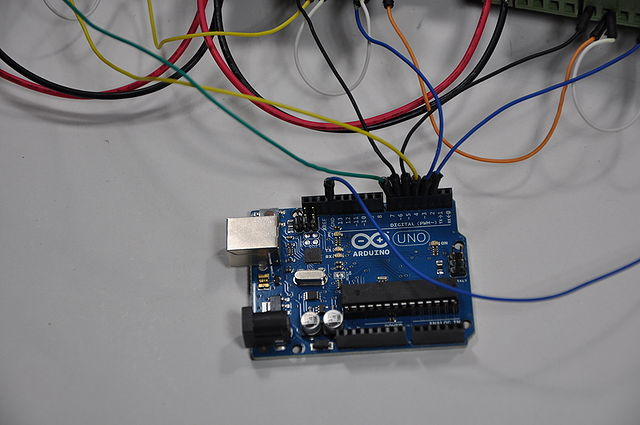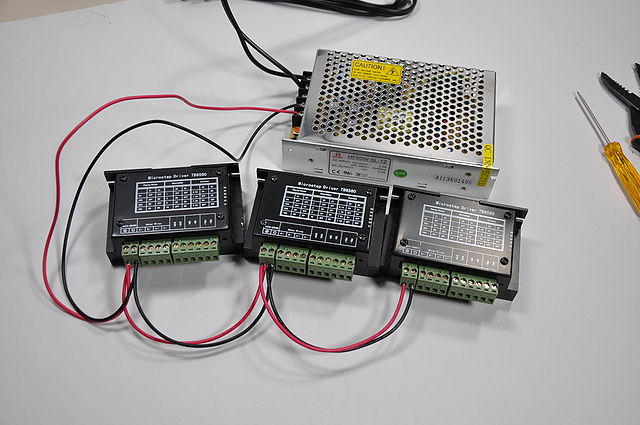
4 WIRE STEPPER MOTOR ARDUINO CODE FULL
In this case we will be driving the stepper motor in full step mode, with two wires, so we set the mode to 2. Include the AccelStepper library:Īfter specifying the connections like before, we need to define the motor interface type for the AccelStepper library. Step the motor with constant speed as set by setSpeed():Īgain the first step is to include the library with #include. Set the speed of the motor in steps per second: Create a new instance of the AccelStepper class:ĪccelStepper stepper = AccelStepper(MotorInterfaceType, dirA, dirB) * Example sketch to control a stepper motor with Arduino Motor Shield Rev3, Arduino UNO and AccelStepper.h library: continuous rotation. Stepper liftmotor = Stepper(stepsPerRevolution, dirA, dirB). In this case I called the stepper motor ‘myStepper’ but you can use other names as well, like ‘z_motor’ or ‘liftmotor’ etc. Initialize the stepper library on the motor shield: For this we use the function Stepper(steps, pin1, pin2) where steps is the number of steps per revolution and pin1 and pin2 are the pins used to drive the stepper motor. Next, you need to create a new instance of the Stepper class, which represents a particular stepper motor connected to the Arduino. So everywhere you mention pwmA, the compiler will replace it with the value 3 when the program is compiled. The compiler will replace any references to this constant with the defined value when the program is compiled. The statement #define is used to give a name to a constant value. Define number of steps per revolution:Īfter this, we define the motor connections (see specifications and wiring diagram above). You can change this value if you want if you are using a different type of stepper motor or setup. This means it takes 200 steps to rotate 360 degrees. In this example we will be using the motor in full-step mode. Next I defined how many steps the motor takes to rotate 1 revolution. More information about this library can be found on the Arduino website. The sketch starts by including the Stepper.h Arduino library. Step on revolution in the other direction: Set the PWM and brake pins so that the direction pins can be used to control the motor:

Stepper myStepper = Stepper(stepsPerRevolution, dirA, dirB) Define number of steps per revolution:


* Example sketch to control a stepper motor with Arduino Motor Shield Rev3, Arduino UNO and Stepper.h library. It comes with two separate channels, called A and B, that you can use to drive 2 DC motors, or 1 stepper motor when combined. With the shield, you can drive DC motors, a stepper motor, relays, and solenoids. The Arduino Motor Shield Rev3 is built around the L298 dual full-bridge driver, made by STMicroelectronics. Information about the Arduino Motor Shield Rev3 is a participant in the Amazon Services LLC Associates Program, an affiliate advertising program designed to provide a means for sites to earn advertising fees by advertising and linking to products on. This one from Adafruit works great at 12 V and doesn’t draw too much current (350 mA). Try to find a stepper motor that can run at 5-12 V and doesn’t exceed the 2 A current limit. In this tutorial I used a bipolar stepper motor with 4 wires.
4 WIRE STEPPER MOTOR ARDUINO CODE HOW TO
How to control a stepper motor with DRV8825 driver and Arduino.

How to control a stepper motor with A4988 driver and Arduino.28BYJ-48 Stepper Motor with ULN2003 Driver and Arduino Tutorial.Control a stepper motor with L298N motor driver and Arduino.


 0 kommentar(er)
0 kommentar(er)
